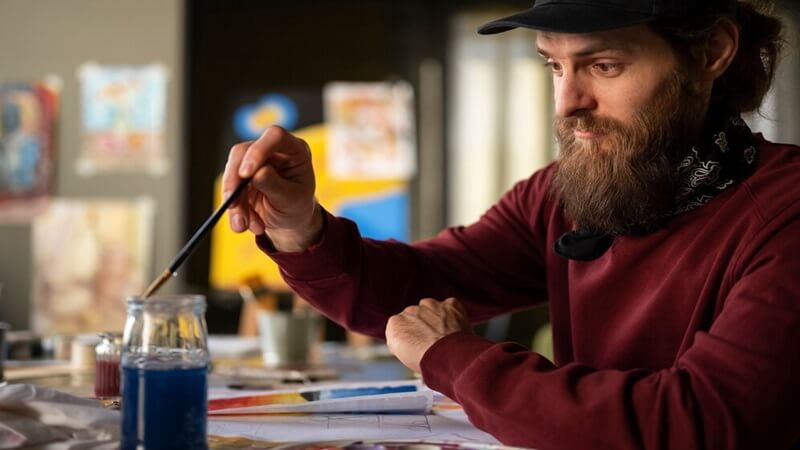In the digital age, having a professional website is essential for artists seeking to build their brand and connect with a broader audience. Your website is more than just a digital gallery; it’s a hub that represents your personal brand, telling the story of your art and offering visitors an immersive experience. Whether you are just starting out or are an established artist, building a strong online presence is key to expanding your reach and growing your career. Here’s how you can create a compelling website that not only showcases your work but also leaves a lasting impression.
Establish Your Brand Identity
The first step in creating a professional website is to define your brand identity. Think about the message you want to convey through your art and how you want visitors to perceive you. Your website design, color scheme, typography, and overall layout should align with your artistic style. Consistency in branding helps visitors recognize your work instantly and strengthens your identity as an artist.
Showcase Your Best Work
Your portfolio is the centerpiece of your website, so it’s essential to display high-quality images of your best work. Make sure the visuals are sharp, properly lit, and highlight the details that make each piece unique. If you create multimedia art, include videos to give visitors a more dynamic experience. Don’t forget to edit video content carefully to ensure it looks professional and matches the overall tone of your website. A polished portfolio increases your credibility and makes a strong impact on potential clients or galleries.
Craft a Compelling About Page
The About page is an opportunity to connect with your audience on a personal level. Share your artistic journey, your inspirations, and the experiences that shape your work. This storytelling element makes your art more relatable and humanizes your brand. Visitors who understand your background and motivations are more likely to engage with your work and follow your career.
Simplify the User Experience
An intuitive and user-friendly design is crucial for keeping visitors on your site. Ensure that your website’s navigation is clear, and avoid cluttered pages that can overwhelm visitors. Categories like “Portfolio,” “About,” “Contact,” and “Blog” should be easy to find and navigate. Simplicity and functionality are key—when users can browse through your site effortlessly, they’re more likely to spend time engaging with your content.
Utilize SEO to Boost Visibility
Search engine optimization (SEO) plays a critical role in driving traffic to your website. By using relevant keywords in your titles, meta descriptions, and image alt texts, you can improve your site’s visibility on search engines. The better your SEO, the easier it will be for potential clients, galleries, and art collectors to find you. This step ensures that your hard work gets noticed by the right people.
Leverage Blogging and Content Creation
Adding a blog to your website can be an excellent way to showcase your expertise, provide insight into your creative process, and engage with your audience. Regularly updating your blog with new posts, such as tutorials, behind-the-scenes insights, or thoughts on current trends, keeps your content fresh and encourages repeat visitors. This also improves your SEO, as search engines favor websites that are regularly updated with new content.
Include Contact and Social Media Integration
Your website should serve as a gateway for deeper connections with your audience. Include an easy-to-find contact page where visitors can reach you for inquiries about collaborations, commissions, or exhibitions. Don’t forget to link your social media profiles so that your audience can stay up-to-date with your latest projects. Integrating your social media can help grow your online presence and foster ongoing engagement.
Ensure Mobile Compatibility
With many people browsing the web via mobile devices, your website must be mobile-friendly. A responsive design that adjusts to different screen sizes ensures that your portfolio looks great whether it’s being viewed on a desktop, tablet, or smartphone. Test your site on multiple devices to guarantee an optimal user experience across all platforms.
Conclusion
Building a professional website as an artist is a powerful way to elevate your brand and broaden your reach. By focusing on strong visuals, a compelling narrative, and an easy-to-navigate design, your website can serve as a key tool for showcasing your work and engaging with a wider audience. Remember to continuously update and refine your site to reflect your evolving style and career growth, keeping visitors excited and interested in your journey as an artist.
For more info visit Word Business
